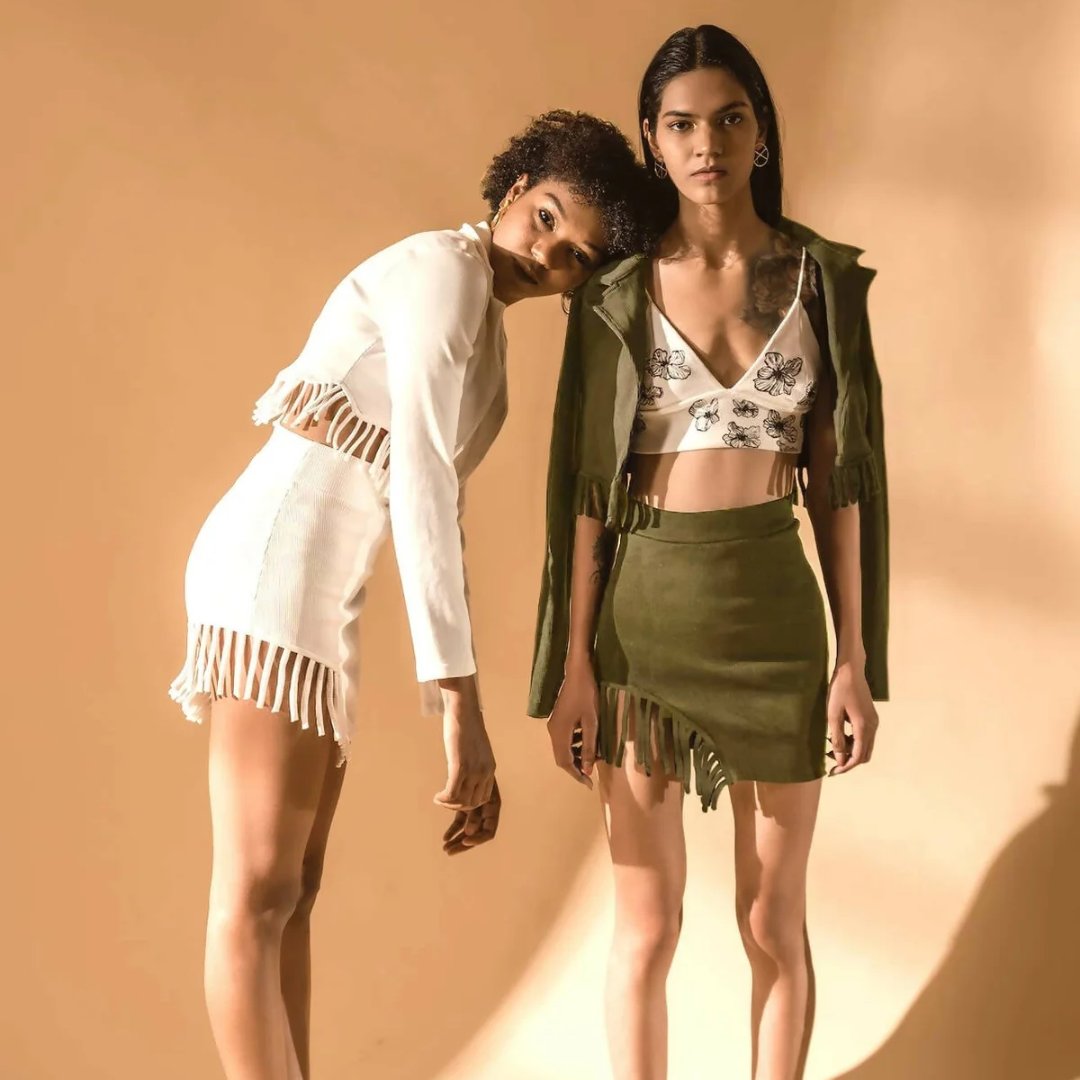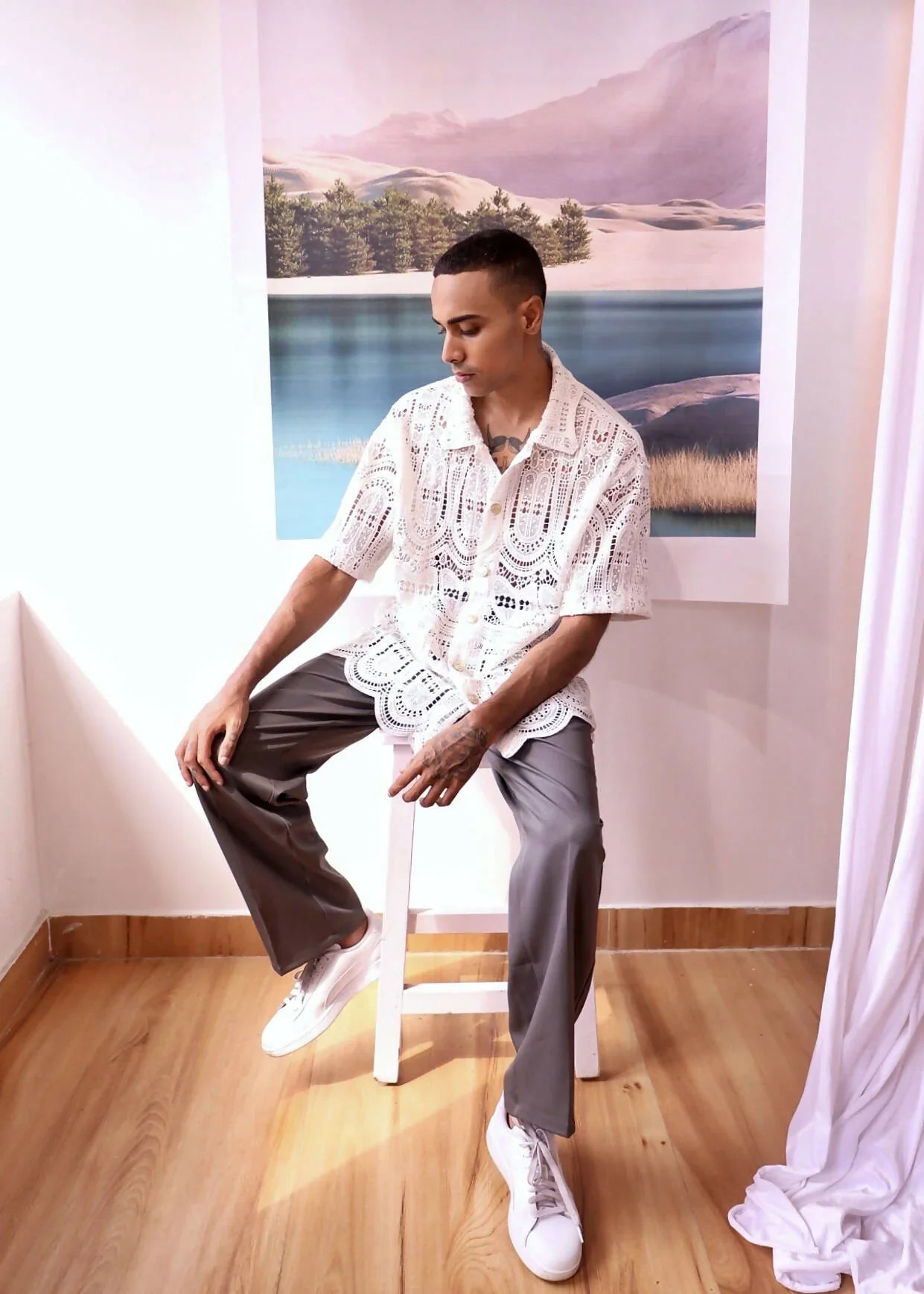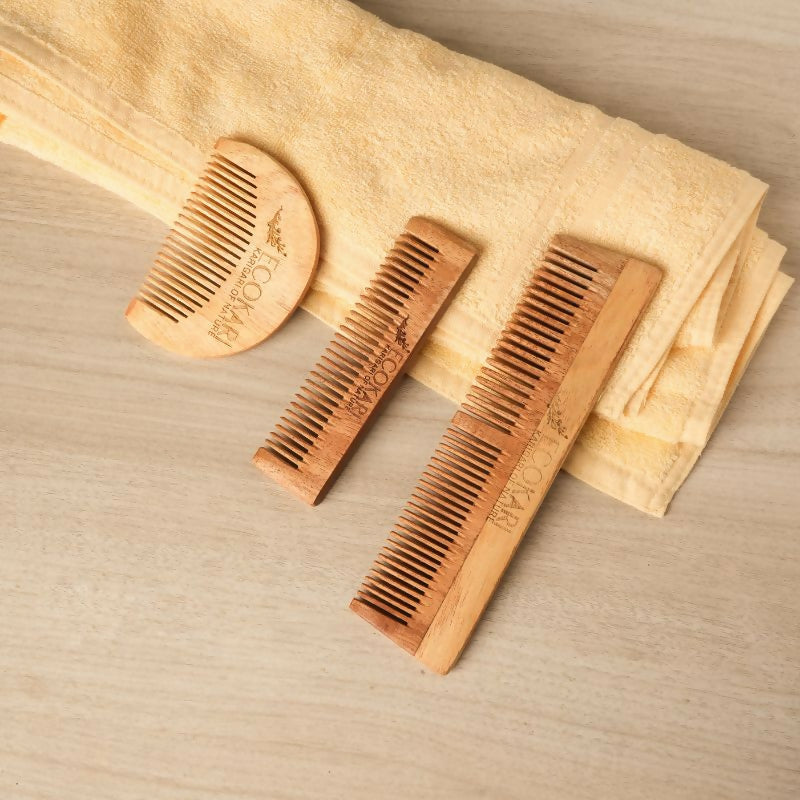Interview with Manasi Kabadi, Founder of Indi Moda
Manasi Kabadi is the founder of Indi Moda, a sustainable fashion brand that aims to redefine women's wear with an Indian flavour. The brand, born out of her passion, works on a triple bottom line approach ensuring that being mindful about the environment, the people involved in producing collections and the life cycle of garments are their priorities while building the brand.
Indi Moda is a zero waste brand that creates upcycled clothing, home accessories and jewellery out of textile waste that is generated from their regular collections. Even for their regular collections, they are mindful about using textiles that don't contribute to water pollution and are polyester free whilst creating garments that are long lasting.
We had a chat with Manasi to know about her journey with Indi Moda and her vision for the brand.
REFASH: Tell us a little bit about your background?
Manasi: I am born & brought up in Mumbai but I originate from Goa. I am a trained Chartered Accountant (CA) and I started my career working in a Pharmaceutical company. I then went on to pursue my MBA from IE Business School, after which I decided to start Indi Moda. The brand was conceptualised when I was still studying and I juggled between studying, working and designing back then.
Despite being trained in other disciplines, I have always had a love for fashion. I would help in designing wedding outfits for brides & bridesmaids in the family. I loved to play with colour & prints myself. Most of my everyday work clothing then was stitched by tailors as I wasn’t happy with what was available in the market. Quite often I had random women come up to me & compliment me for my style & outfit.
R: What made you start Indi Moda?
M: I started working at the age of 19 in a Chartered Accountancy Firm while studying for CA. I worked in a smaller organisation but we had to abide by a certain dress code. At the age of 19 I owned black work pants & multiple shirts that were boring & flat out manly. I also tried to play with colours by wearing kurtas & tunics but the designs & patterns of these outfits made me look a little older than my age. Also comfort & longevity came into picture as I had to wear these outfits all day & I was drawing a very basic salary. I looked around from brands that offered affordable good quality clothing that was fun-loving, modern & quirky. All of it while being appropriate for work & everyday wear. This lead to the start of Indi Moda.

(Manasi Kabadi, Founder of Indi Moda)
R: Where do you source the raw materials from?
M: Our fabrics are sourced from all across India. Most of our handloom fabrics like Ikat are sourced from southern weavers. Our cotton fabrics come from sellers in Mumbai. Our printed & embroidered fabrics come from Delhi. Our Chanderis & Raw Silk fabrics come from Ludhiana. Our Phulkaris come from Patiala. Our silks comes from a small town Paithan, Maharashtra. We are currently working on organic cotton & Hemp fabric that we can directly source from weavers. We use our manufacturing fabric waste or old / dead stock & convert them into home or fashion accessories. We work with local weavers or artisans that help make our accessories. We are currently working with an NGO in Pune who make fabric out of plastic to manufacture tote bags, pouches, etc.
R: What inspired you to create these upcycled products out of your production waste?
M: Zero wastage has been an integral part of my childhood. My family has always taught me about how important it is not waste anything. When I was little my grandmother always pushed me to atleast eat everything on my plate & appreciate the fact that I am getting good food even though it isn’t my favourite. Thanks to my teachers at my Catholic school, I always saved on electricity by switching off lights & saved water by turning off taps.
Hence when we started manufacturing I couldn’t deal with the fabric that was getting wasted. All the little trimmings of good quality fabrics were getting wasted every time a dress or a blouse was made. We were concerned about what we were going to do with all of it. That’s when I started reading about fashion pollution & landfills. We took our time & tested various options & finally realised that the fabric waste posed as an opportunity rather than a problem.
We worked with our tailors & made few variations & tested the products to see if the products were sustainable. Following that we rolled out the upcycled products segment & with every garment collection we make, we have a sustainable accessories collection.
R: Take us through the design process of the upcycled products?
M: Upcycled products are normally made post a production batch of garments. We try to merge our production waste & old/dead stock & convert them into products.
The old/dead stock fabrics are first tested to see its longevity as they are normally six months old. Only if they seem feasible are they upcycled. Every design starts with the quantity of fabric waste available to make products. We normally match fabrics that we feel will work together & measure the overall fabric available.
Then we go to our inspiration board to decide what we want to make. Our inspiration board is a mix of pictures & ideas that we have liked over the years. Inspirations mainly around home décor, fashion accessories, organisers, gadget accessories, etc. We also look at past products & customer feedback we receive at pop-ups & our store to better our products.
After deciding on the products, we source the inner lining or base needed to make the final product. We try to source these from our local kabadi wala (scrap seller). For example, our jewellery normally has some pieces of foam of cardboard giving it some stiffness. This was sourced from old used cardboard boxes. After our fabrics are in place, we approach our local tailors & job workers to make us a sample of the products. We discuss what we have in mind & how we want the product to be made. The discussion involves a lot of recommendations from our artisans that make it easier to either manufacture the product or saves on overall fabric used. Once the sample is ready we test it out in our store for a week to get some customer feedback. Once we feel it’s good to go, we make batches of the products.
R: You also work with artisans and underprivileged self-help groups. Tell us more about that?
M: We currently work with two sets of artisans & a group of SHG’s who help manufacture different products for us. The SHG group manufactures primarily our garments for us. They are based out of Bhiwandi, Mumbai & they manufacture our ethnic & western wear. They are a group of 6 tailors who came together & decided to support each other so that they could manufacture bigger orders & then split the profit amongst themselves. They also do our pattern cutting, packing, product tagging, etc. & deliver the final product to us. We work with a family of artisans who manufacture accessories like scrunchies, pouches, etc for us. They also upcycle our old stock like dupattas, palazzos, pants, etc. We also work with a local artisan who does our embroidery for our festive wear collections.
R: In this era of over consumption, how important & urgent do you think is for the designers to understand that waste is a design flaw?
M: It is urgent & obvious in today’s time for designers to understand that waste is majorly a design flaw. Fabric waste during a manufacturing process is something that is known to the designer before the actual production begins. They are aware about the complexity of their design resulting in excess use of fabric or excess wastage of fabric. It's not only about the fabric waste but also about the resources that get wasted with the fabric. The tons of water or the tons of cotton plants that is utilised to make that fabric is also a major loss in that entire process. Wastage in any manufacturing process is a pure loss to the business.
Hence, I believe that from a monetary point of view rectifying this flaw is most critical. This will have a major impact on the cost of garments & overall margins of these businesses. Hence we are always open to tweaking our products if our tailors inform us about the fabric waste. Every time a sample is made, the fabric before & after production is measured & analysed for consumption & wastage.
R: In your opinion, what do you think is the problem with the way people are consuming fashion today?
M: Roti, kapad aur makaan (Food, clothing & a house) – these 3 things were supposed to be bare necessities of life. But today fashion has evolved to become a lot more than a necessity. It has become a persons' identity, status symbol & temporary feel good factor. With the influx of influencers & instagrammers, women across the globe are aspiring to dress up well & look their best. While I strongly endorse dressing up, women are blinded by trends driven by women who are paid to make a certain outfit a trend. Hence, women shop today without answering the simple question –
Do I really need to buy two denim jeans? Shouldn’t one just work fine?
Rationality is what is missing. Women are also driven by peer groups that they are part of. To add to that, women have access to fashion at throw away prices. Quite often the money spent on clothing is extremely minuscule, like I remember a street vendor selling a skirt of 5 euros at the La Latina Sunday Market in Madrid, Spain few years back. With the cheap pricing & the trends around, women are having it quite easy to shop something new almost every weekend.
R: How has the pandemic affected your business? How are you planning to overcome that?
M: The pandemic has hit us pretty hard. Our operations have been shut since March 2020. We are currently at the growth stage wherein we were looking to establish a base in India as well as the US. However, due to the cash crunch we are facing, all our expansion plans have been postponed. We prioritised our job workers & employees primarily & ensured that they all were taken care of. We have provided them with masks, sanitisers, food, salaries, wages, advance, etc. depending on their requirement. Our staff has been most affected with the pandemic. Some of them unfortunately lost their family members to this pandemic. However we are opening up soon & we all are positive to turn things around. We are looking to be more customer driven & communicate more with our customers during these difficult times. One thing that has kept us going are our customers. While we have been receiving orders, we have also received calls & texts from our customers asking us about our well-being & expressing their desire to meet up with us soon.
R: What is your vision for the brand?
M: My vision for Indi Moda is to become a global fashion brand for women that offers the best quality everyday wear clothing at affordable prices that has been made with an artisanal Indian touch. I aspire to take this brand not just across India but across the world.
I want the garments to be worn by women across all races, creeds & geographies.
Last year in July, I dared myself by doing a two day pop-up in New York with a handful of pieces from our collection. It was just me & some of my garments in a pop-up space with almost 20 other designers. I was nervous about how my brand would be recognised by people. But the two days turned out to be an eye opener. I interacted with women from around the globe who appreciated the colours & Indian prints. The highlight was women who tried out our garments & then wore it the whole day that day just because they liked the feel & the look of it. That is my vision. To have every woman across the globe to be an IndiLady dressed in our outfits.
Shop Indi Moda's upcycled products here -
Discover upcycled jewellery here.
Read more interviews here.






Leave a comment